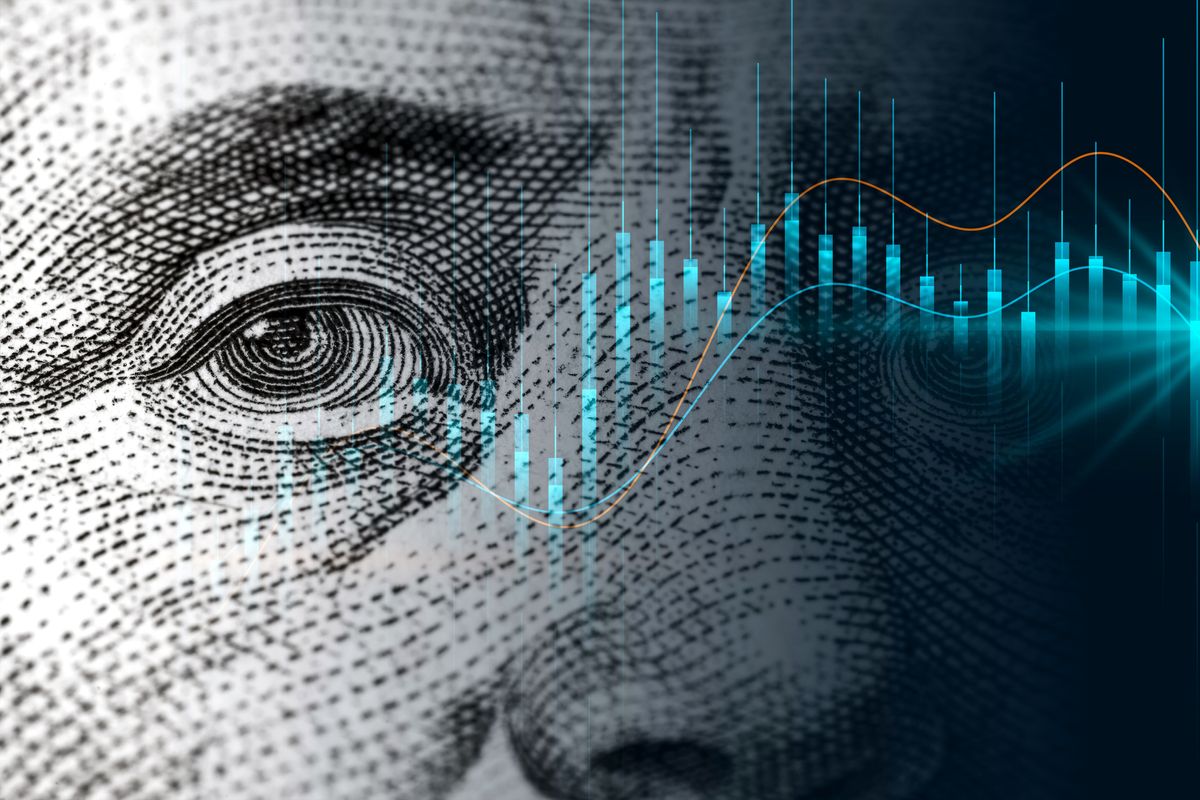Market worries over the high levels of US government debt have been exacerbated by Donald Trump’s win in the presidential election. With a range of economic policies centred on inflationary tariffs and tax cuts, investors see an increased risk of higher deficits and inflation – and have pushed the yields on government bonds dramatically higher in recent weeks. US public debt is already close to 100% of GDP (standing at $26 trillion) and is currently projected to rise to 122% by 2034. The US national debt (a broader measure that includes intragovernmental debt) is already $35 trillion. That’s a real-term tripling in 30 years and a doubling as a proportion of GDP to 123%, more than all but the most free-spending European nations. It’s also far above the 90% level that was famously (if controversially) posited by economists Carmen Reinhart and Kenneth Rogoff as the point beyond which a nation’s debt tends to act as a drag on economic growth.
Is the US national debt a concern for America’s economy?
Apparently not, to judge from the recent election campaign, when the issue was barely mentioned. This is despite fiscal policies from Trump that would raise the deficit from the current level of 6% – “exceedingly high for a country at peace” – to 12%. That compares with 4.4% in the UK, 2% in Germany. Why are the Americans so relaxed? Partly, because when it comes to the risks of running up a gigantic debt pile, the US does still benefit from the “exorbitant privilege” of issuing the world’s primary reserve currency, the dollar.
Its national currency greases the wheels of the world economy, and so its debt issuance has a critical support mechanism shared by no other sovereign borrower. But even so, the unpredictable fiscal agenda of a second Trump term takes the US into “uncharted territory”, State Street strategist Noel Dixon told Bloomberg. If the debt pile grows faster than expected, and Trump’s presidency proves turbulent, the big question is whether global investors continue to see the US as a safe and reliable place to do business. “Will we start to see people truly questioning the integrity of our institutions?” Dixon asks. “That’s a big tail risk. Once the genie is out of the bottle, it’s hard to get back in.” It doesn’t help that during his first term, Trump called the US central bank an “enemy” of the nation.
Sign up to Money Morning
Don’t miss the latest investment and personal finances news, market analysis, plus money-saving tips with our free twice-daily newsletter
Don’t miss the latest investment and personal finances news, market analysis, plus money-saving tips with our free twice-daily newsletter
Is the US bond yield spike a warning for Trump?
The dumping of US government bonds since mid-September means that the yield on 10-year Treasuries – i.e., the long-term interest rate the federal government has to pay to borrow – has surged from around the 3.6% mark to above 4.4%, a leap of 80 basis points. The majority of the surge (about 50 basis points) has happened in the past month, and since Trump’s victory, the yield has carried on rising. These are by no means panic levels: the rate is still just below recent peaks in autumn 2023 and spring 2024. But the upward move over the past month has been unusually sharp, reflecting market concerns over the long-term sustainability of US government debt. Some say the return of the bond vigilantes is nigh.
What’s a bond vigilante?
It refers to the bond market’s putative role as a brake on the government’s ability to spend and borrow. The term was coined by US economist Ed Yardeni in the 1980s, and describes investors who are hawkishly vigilant against fiscal or monetary policies that they consider inflationary – and who force governments to U-turn by dumping bonds and pushing up yields. In 1993-1994, US 10-year Treasury yields leapt from 5.2% to over 8.0% on fears over the Clinton administration’s debt-fuelled spending blitz – obliging the government to reverse course and leading adviser James Carville to quip that he would like to be reincarnated as the bond market as “you can intimidate everybody”. The fear is that Trump will only learn this lesson the hard way.
Are the bond vigilantes coming back?
Yardeni thinks they could be. “If the Trump administration runs excessively stimulative fiscal policy, with lots of spending and tax cuts, leading to even wider deficits, I think then that may cause the bond vigilantes to push yields up to levels that create problems for the economy,” he told The New York Times. Meanwhile, fears over sovereign debt are not just an American issue. The UK has also seen yields rise in response to Labour’s big-borrowing, big-spending Budget. And, globally, public debt is set to exceed $100 trillion by the end of this year, according to an IMF paper published last month – and approach 100% of global GDP by the end of the decade. The US and China are driving that surge, but it’s a global issue that will only become more acute in an era of increased defence spending, ageing populations and the global threat from climate heating.
How bad will it be?
According to UN figures, there are more than 50 developing countries that already spend more than 10% of revenues on debt servicing costs – and 3.3 billion people (two-fifths of humanity) live in countries that spend more on servicing government debt than on education or health. Few countries are currently threatened by disorderly markets, but high levels of debt are already having an impact on global stability, says Spencer Feingold in a recent paper on the issue from the World Economic Forum (WEF). This summer in Kenya, for instance, deadly protests erupted after the government tried to raise taxes in the face of a debt crisis that saw interest payments swell to almost 60% of total government revenues. According to a WEF survey of chief economists working in a variety of global firms and institutions, the outlook is highly worrying. A majority of respondents believed that current debt dynamics will undermine government efforts to boost growth and leave countries poorly prepared for the next economic downturn.
This article was first published in MoneyWeek’s magazine. Enjoy exclusive early access to news, opinion and analysis from our team of financial experts with a MoneyWeek subscription.





